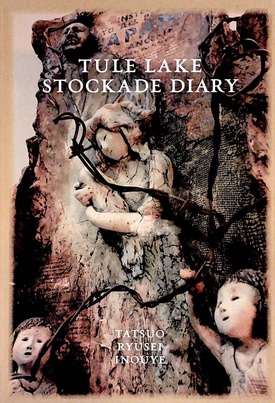There now exists a richly diverse number of publications devoted to the World War II concentration camp for Japanese Americans generically called Tule Lake. This penal facility was initially known as the Tule Lake Relocation Center when it opened on May 27, 1942.
However, in the wake of an ill-conceived so-called “loyalty questionnaire” imposed on all 10 of the “relocation centers” and administered by the War Relocation Center in early 1943, it alone—thanks to pressure applied jointly by the U.S. government, the U.S. Army, and the Japanese American Citizens League—was transformed on July 15, 1943, into the high-security prison re-named the Tule Lake Segregation Center. Its primary purpose was to incarcerate so-called “disloyal” Americans of Japanese ancestry, and presumably, ready them for a future life in Japan.
Around 2000, and rightly so, by far the major attention of investigators of this penal facility has been accorded to the post-1943 compound, since it was typified by military oppression of the camp’s inmate population and their resistance to that oppression. The quintessential representation of the struggle between these two combatants was the Tule Lake stockade, a prison within a prison, which assumes centerstage in this remarkable diaristic volume under review.
Until the Tule Lake Stockade Diary, there existed no extensive autobiographical record that encompassed the day-to-day experiences of those roughly 200 Nikkei who, without a hearing or a trial, were locked up for months on end in the crude, grimy, and densely populated army-run stockade on the unsubstantiated basis of being camp “troublemakers.” Fortuitously, one of them, 34-year-old Kibei Tatsuo Inouye, had the prescience to maintain for posterity what he experienced and observed within the three months span, extending from Nov. 13, 1943 to Feb. 14, 1944, in which he was a stockade prisoner.
A fourth-degree black belt judo master, the stoic, introspective, but forthright and conscientious Inouye was born in Laguna Beach, Calif., and educated in Japan, before he and his Nisei wife Yuriko and their two young Sansei daughters, in May 1942, were excluded from their West Coast home in Lancaster, Calif. and incarcerated in the Poston concentration camp in southwest Arizona. It was there that Inouye’s negative and neutral responses to the highly controversial two key questions on the so-called “loyalty questionnaire” landed him and his family in the Tule Lake Segregation Center, where he continued his judo instruction.
In short order, because he became a member of an inmate negotiating committee to protest for improved living and working conditions and against the camp director’s overreaction to this development by ordering tanks and soldiers with bayonets and declaring martial law, Inouye was summarily remanded to the hastily constructed stockade.
Inouye’s riveting daily entries in his diary run the gamut from the skimpy meals, spartan amenities, and punitive treatment meted out to the escalating number of prison denizens, to reflections on such philosophical concerns as honor, respect, patriotism, family values, and human dignity. Participants in the moving and illuminating launching program for Tule Lake Stockade held at the Japanese American National Museum Dec. 11, 2021 discussed all of these topics and more. This “‘Conversation on Tule Lake Stockade Diary’ by Tatsuo Ryusei Inouye” event merits viewing on JANM YouTube channel by readers of this brief review.
The prime mover in the production of Tule Lake Stockade, a truly stunning, powerful, and invaluable volume in every major respect, is Kyoko Nancy Oda, a Sansei social activist who was born in Tule Lake Segregation Center shortly before the Inouye family returned to Southern California from Tule Lake. The Inouye diary was skillfully translated into English by Masumi Izumi, a professor from Doshisa University in Kyoto, Japan, edited proficiently by notable Japanese American Sansei journalist Martha Nakagawa, and illustrated with dazzling artwork created by Ernie Jane Masako Nishi, the middle Sansei daughter of Tatsuo and Yuriko Inouye.
TULE LAKE STOCKADE DIARY: NOVEMBER 13, 1943-FEBRUARY 14, 1944
By Tatsuo Ryusei Inouye
(Los Angeles: Nancy Oda Publishing, 2020, 256 pp., $40, hard cover)
*This article was originally published in The Nichi Bei Weekly on July 21, 2022.
© 2022 Arthur A. Hansen, Nichi Bei Weekly








